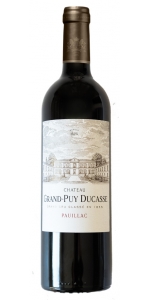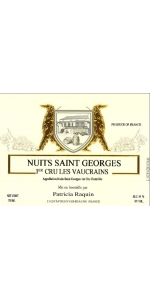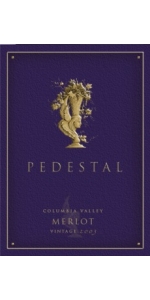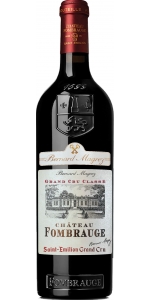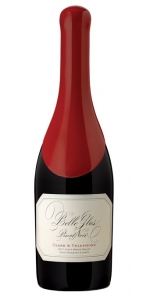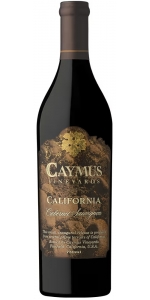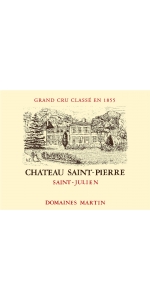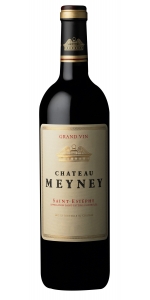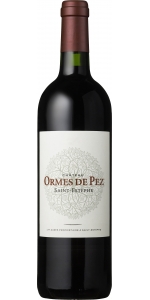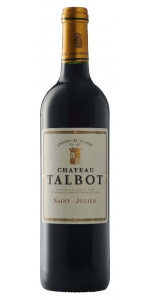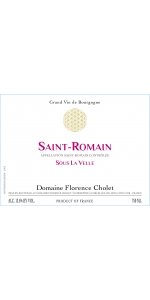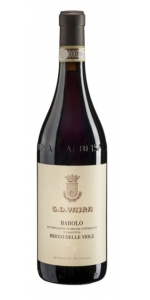Haut-Marbuzet Saint Estephe 2019
6 bottles with free shipping for: $450.00
12 bottles with free shipping for: $840.00
| BUY MORE! SAVE MORE! | ||||||||||||||||||||
|
| Country: | France |
| Region: | Bordeaux |
| Winery: | Haut-Marbuzet |
| Grape Type: | Merlot |
| Organic: | Yes |
| Vintage: | 2019 |
| Bottle Size: | 750 ml |
The characteristics of Haut-Marbuzet are mostly defined by its wine-producing methods.
The grapes are harvested once they are very ripe, then destalked. The maceration time is very long. Owner Henri Duboscq remains committed to using traditional materials, like concrete vats. They preserve the natural yeasts of past wines. Henri Duboscq says that he likes the idea that each year, the new yeasts revive the old ones, and the old influence the new.
The Duboscq were among the first to harvest overripe grapes. The wine is then matured in new oak barrels. Here, too, Haut-Marbuzet was among the first to use this production technique. All of these practices complete the characteristics of the terroir. They influence the color of the wine, its structure, its body, and finish.
Henri Duboscq often speaks of his love of unctuous wines, feminine wines that have fine, woody scents, with soft and ripe tannins. From this point of view, the wine of Haut-Marbuzet clearly stands apart from the classical wine of Saint Estèphe which is more virile, austere and astringent.
Tasting notes
Haut-Marbuzet shows a dark and intense color and a delicous bouquet of red and black fruit aromas, violet, pepper and coconut nuances. On the palate, the wine is rich and unctuous, with fine and peppery tannins that support the solid and fresh texture.
Review:
"Black and blue fruit, walnuts, gravy, vanilla, praline and cigar box on the nose. Full-bodied with fine tannins. Balanced, layered and polished with a fleshy texture. Harmonious, with elegance and intensity. Beautiful finish. Wow. Drink from 2025."
- James Suckling (January 2022), 96 pts
Hervé Duboscq became the owner of a plot of seven hectares called Château HAUT-MARBUZET in 1952. He resurrected the vineyard and gave rise to a wine of its own style, which immediately charmed many experts. In 1962, his son Henri joined him in order to help him reach the only goal, which is precious to the Duboscqs, the “glory of Haut-Marbuzet”. After buying the neighbouring vineyards, as well as pockets, which were originally the result of the Mac-Carthy’s parcelling out, the vineyard attained an area of 66 hectares in 2005.
At the same time, the Duboscqs bought the chateaux Chambert-Marbuzet, Tour de Marbuzet and Mac-Carthy. All three are crus Bourgeois of Saint-Estephe.
The greater part of the vineyard of Haut-Marbuzet is made up of a gravelly topsoil and a clay-limestone subsoil that contains iron. The Graves wine owes its name to its soil, which contains gravel of various size. The gravel stores the sun’s heat during the day and at nightfall, it emits the heat back to the grapevines. The gravel is deposit from the Gironde river. It forms a series of slightly sloping terraces. The high density of plantation is immediately visible in the vineyards. On average, there are 9,000 vines per hectare. High-density planting ensures an equal yield with lesser grapes per vine, but better quality grapes. At Haut-Marbuzet, this high density also increases the competition between the grapevines and encourages a deep root system : « the typicality of the terroir lies at a depth of four meters ».
The deep rooting system of the grapevines as well as the banishment of chemical herbicides best reflect the characteristics of this terroir. The vineyard of Château Haut-Marbuzet is made up of 50% Cabernet Sauvignon, 40% Merlot and 10% Cabernet Franc and Petit Verdot. The strong presence of Merlot gives the wine a smooth and mellow taste. It complements the austere notes of Cabernet Sauvignon with its opulence, charm and seduction.
Château Grand-Puy Ducasse will seduce lovers of great red wines from Pauillac with its exceptional quality marked by a very beautiful aromatic richness. A classic vintage, complete, complex, rich and unctuous, this cuvée promises superb aging potential.
Aging 18 months in French oak barrels (35% new for the 2020 vintage).After manual harvesting in crates and an initial sorting in the vineyard, the grapes are sorted again using the latest generation optical sorting system. Vinification is then carried out in stainless steel temperature controlled tanks however for some of the batches, malolactic fermentation is also carried out in new barrels.
Patricia Raquin Nuits St. Georges les Vaucrains is made from 100 percent Pinot Noir.
"Vaucrains" comes from old French word meaning place with very little fertility (which is very good terroir for grape production)
Nuits-Saint-Georges AOC: AOC wines since 1936, 757 acres of grapes, 97 % red wine, 3 % white wine. Nuits refers to “walnuts in the area, not night”….41 Premier Cru vineyards
Tasting Notes: Powerfull aromas with lots red wild fruits, full bodied wine with great aging potential.
VINEYARD: Gravel and Silt
HARVEST: Harvest by hand.
VINIFICATION: Harvest by hand. Traditional vinification in thermoregulated stainless steel. Pre-fermentation – temperature controlled cold maceration during 10 days. Long fermentation during which pigeages and pumping over are performed. Post-fermentation - maceration at 30°C for 5 days.
AGEING: Aged in new French oak barrels for 16 months.
Roast lamb - Rib steaks - duck
Long Shadows Pedestal Merlot is made from 82% merlot, 15% cabernet sauvignon and 3% petit verdot.
Michel Rolland, Pomerol vintner and consultant to many of the world's top wineries, teamed with Washington State wine visionary Allen Shoup to produce this limited release wine.
With its intense color and inviting aromas of dark berries, licorice, baking spice and a hint of smoke, the Pedestal is a bold wine that leaves a lasting impression. Dark fruit flavors integrated with sweetness from the barrel and richness from the tannins come together seamlessly, lingering across a structured mid-palate and lengthy finish.
Winemaking: Hand-harvested grapes were double-sorted to remove green material that might impart harsh tannins, then most of the lots were cold soaked to build richness and flavor before undergoing whole-berry fermentation in 55L upright French wood tanks. This, combined with gentle pump-overs throughout fermentation, enhanced the wine’s color, texture and mouthfeel. The finished wine was aged 22 months in 85% new French oak barrels.
Review:
"The 2019 Pedestal Merlot was made with 21% Cabernet Sauvignon and 4% Malbec. The nose opens with a firm backbone of fresh and ripe black plums and dark cherries before delightful oaky essences sway from the glass with notions of baked earth. Full-bodied, the palate offers a firm mouthfeel that lifts with time to reveal a succulent tannic edge and juicy flavors of spiced plums and blackberry skin with brown baking spices, vanilla and nutmeg that resonate with vibrancy and power. The wine continues to evolve and reveal elegant complexities before ending with a long spicy finish with delightful oak tones. Just under 32,000 bottles were filled after the wine rested for 22 months in all French oak, 86% new barrels. - Anthony MUELLER"
- Wine Advocate (May 11th 2023), 94 pts
Fombrauge Saint Emilion is made from 96% Merlot and 4% Cabernet Franc.
Château Fombrauge 2020 has a dark red hue, intense fruit aromas and elegant tannins that offer a generous mouthfeel rarely seen in wine so young.
The nose reveals aromas of cherries, blackberries and raspberries, along with spicy notes.
On the palate, the wine i round, soft and silky. Its deep richness, matched with a nice freshness and a long and mellow finish, make it already a great Château Fombrauge, with a long ageing potential.
Chateau Fombrauge Saint-Emilion Grand Cru's food pairing
Belle Glos Clark and Telephone Vineyard Pinot Noir is made from 100 percent Pinot Noir.
The Clark & Telephone Vineyard was established in 1972 and planted with “own root” Martini clone vines. Located just 13 miles from the ocean and situated on a west-facing slope, this vineyard experiences weather patterns that pull from west to east to bring cool fog and coastal breezes inland until August when Santa Ana winds begin.
We harvested early in the morning so the fruit would arrive at the winery while the grapes were still cool to preserve their vineyard-fresh flavors. After destemming (but not crushing) the berries, we cold-soaked the must for 14 days to soften the skins and allow for ideal extraction. During fermentation in a combination of closed and open-top stainless steel fermenters, we used both punch-down and pump-over techniques to extract color and phenolics. We aged the wine in 100% French oak (60% new) for up to 12 months. After the wine underwent malolactic fermentation, we racked it twice before bottling.
Deep ruby red in color with lush aromas of ripe cherry, nutmeg, dark chocolate and holiday baking spices. Bold and complex flavors of black plum, crushed raspberry and blueberry pie linger on the palate. The texture is rich and lively, and leads into a warm and structured finish.
Review:
Burnished black raspberry and graphite form a bond on a foundation of dark chocolate and sweet tobacco. White pepper outlines rose petal on the well-structured palate before perky acidity and a creamy weightiness highlight the lengthy finish.
-Tasting Panel 95 Points
I feel this wine expresses the greatness of California and its hidden pockets where Cabernet can excel. The cold Pacific Ocean running the entire length of the state presents maritime influences – and with each small distance eastward the climate warms. Stony soils, south facing slopes and moderately warm conditions are the keys to producing dark, rich and good tasting Cabernet.
A small release from Caymus Vineyards, this wine is a California-appellation Cabernet Sauvignon – supple, dark and rich, bearing the signature hallmarks of Caymus. It is sourced from sites throughout the state which feature climatic conditions, soils and topography that are ideally suited to Cabernet. This project stems from excitement over California's diverse vineyard land, often in lesser-known areas, with the potential to produce exceptional Cabernet.
Saint Pierre Saint Julien is made from 79% Cabernet Sauvignon and 21% Merlot.
Chateau Saint-Pierre Saint-Julien 4th Grand Cru Classé boasts a rich and brilliant purple color, a complex aromatic expression marked by beautiful ripe fruits combined with soft spices, chocolate and licorice nuances. Well-balanced and a good texture, the palate is round and subtle, supported by velvety tannins that enhance the elegant and pure character of this Saint Julien.
Review:
"Very pretty and typical for the appellation with aromas of blackcurrants, violets and sandalwood that follow through to a full body with layers of polished tannins and a long, flavorful finish. Lasts a long time on the palate. Classic structure. Drink after 2027."
- James Suckling (January 2022), 96 pts
Meyney Saint Estephe is made from 52% Cabernet Sauvignon, 35% Merlot and 13% Petit Verdot.
The vineyards planted on a perfectly drained siliceous gravel soil provide ideal conditions for the maturity of the grapes and result in a very deep black color wine with spicy notes and a distinguished style.
The 2020 vintage embodies what Bordeaux does best - a great classic vintage, complete, complex, rich and unctuous.
Review:
"Attractive aromas of ripe dark berries with dark spices, walnut, chocolate nibs and bark. Medium- to full-bodied with a dense, velvety texture and plush, fine-grained tannins. Very textural and creamy with a deep core of ripe dark fruit and a succulent finish. Try after 2025."
- James Suckling, 93 pts
Ormes de Pez Saint Estephe is made from 54% Merlot, 38% Cabernet Sauvignon, 4% Cabernet Franc and 4% Petit Verdot.
Château Ormes de Pez 2020 displays deep garnet-purple color with notes of plum preserves and dark berries, plus hints of graphite. Nice chewiness to the texture and lovely freshness, finishing on a lingering fragrant-earth note.
Chateau Talbot Saint-Julien Grand Cru Classe is made from 69 % Cabernet Sauvignon, 26 % Merlot, 5 % Petit Verdot.
The wine presents a delicate and captivating nose of black fruits, fresh tobacco, peppermint and floral nuances. Ripe and juicy fruit flavors of black currants on the palate with well integrated velvety tannins and a beautiful refreshing acidity to the long finish.
For the 2018 vintage, a special packaging with a unique silkscreen printing bottle was created to mark the 100th anniversary of the Cordier Family's acquisition of Chateau Talbot
Pair with red meat, roast pork, game meat, poultry, hard cheeses, poached pear.
"Well-built and rather refined for the vintage, with a deep well of red and black currant paste and plum reduction flavors supported by a deeply inlaid iron note, all of which run the length of the wine. Offers subtle savory, tobacco and singed cedar notes that add range, with a savory echo that leaves a mouthwatering feel in the end. Built to cellar. Cabernet Sauvignon, Merlot and Petit Verdot. Best from 2025 through 2040. - James Molesworth"
- Wine Spectator (March 2022), 95 pts
"Sous la Velle" takes its name from its location 'under the village' of Saint Romain. The vineyards enjoy a steep and south facing exposure, planted on marl scree with the vines taking root in the limestone and offering a beautiful minerality to the wine. The nose expresses small red and black fruits, blackcurrant, cherry, raspberry and violet. The mouth provides a rich, supple and elegant wine with a good structure, pure fruit and vibrant acidity.
After destalking the grapes, the juice, skin and pulp are put into the vat for cold maceration. It lasts from 15 to 18 days. The alcoholic fermentation will follow, lasting from 5 to 6 days. These steps may be punctuated by push-downs. Aging in oak for 12 months.
Pork Filet Mignon, Pike Perch, Tomme de Morvan Cheese.
G.D. Vajra Bricco Delle Viole Barolo is made from 100 percent Nebbiolo.
The Barolo Bricco delle Viole shows the signature verticality of its vineyard. The wine is beautifully layered and - while restrained as it’s always the case in the youth of Bricco delle Viole - it also shows a complexity of layers with purple flowers, sweet spices and mineral tones. The palate is noble, with a refined acid spine and profound tannins that promise a long aging potential.
Among the historical vineyards of Barolo, Bricco delle Viole is the highest and the closest to the Alps. It rises from 400 to 480 meters above sea level, on the Western ridge of the village. Its name, “Hill of Violets”, originates from the flowers that blossom early here due to the perfect south exposure. Up above the fogs, Bricco delle Viole enjoys the earliest sunrise and the last sunset every day. Thanks to its vines dating back to 1949 and -now- 1931, a dramatic diuturnal temperature range and this pure light, Bricco delle Viole generates a sophisticated and profound Barolo DOCG of bright aromatics, chiseled tannins and subtle minerality. 2018 is a vintage that shows many nuances of Bricco delle Viole: beyond the signature verticality of this site, the wine offers high tones laced with mineral nuances and plenty of energy and youth.
Review:
A juicy Barolo, with vibrant acidity and a fluid profile that exudes cherry, raspberry, mown hay, mineral and eucalyptus aromas and flavors. Tight yet long, with excellent potential.
#26 Wine Spectator Top 100 of 2023
The last wine poured at my tasting at the winery is the G.D. Vajra 2019 Barolo Bricco delle Viole. With its high vantage point in the hills west of Barolo, Bricco delle Viole is a world apart in terms of soils (with Sant'Agata marl and fossils) and even harvest times. Slow and careful ripening like the kind that characterizes fruit in 2019 renders a very delicate and ethereal expression with floral tones, wild mint and licorice. This organic wine is solid in build and structure. Indeed, Isidoro Vaira remarks that Nebbiolo tannins have changed since the 1970s and 1980s.
-Wine Advocate 97+ Points
Jeweled in appearance, the 2019 Barolo Bricco Delle Viole may be the best wine I have tried yet from Vajra. Its gorgeous and alluring perfume of fresh roses is followed by a Burgundian, elegant red with incredible length and no harsh edges, fine and present tannins, and beautiful, graceful concentration. It is drinking well now, and I will be trying to get my hands on as much of this as possible. Drink 2025-2045.
-Jeb Dunnuck 97 Points
- back
Pulled from a Gentleman's cellar, all wines from this cellar have been purchased by the owner either from the importer or direct from winery. They stayed in his cellar until being moved to the Timeless Wines warehouse.
Paul Hobbs George Menini Estate Pinot Noir is made from 100 percent Pinot Noir.
Brilliant ruby red in the glass, the 2022 vintage follows the color with matching aromas of wild mountain strawberry, raspberry, and cherry infused with hints of black tea. On the palate, this wine has the texture of thick satin, evolving seamlessly with subtle energy and pleasant tension. Elegant, fine-grained tannins run through a lingering, juicy finish.
Review:
Wow, a super well-structured, vital wine with oodles of generous black fruit flavors on a firm frame that will help it age well and improve with time. Black cherries, blackberries, blueberries, forest floor nuances and a slight smoky, stemmy character from using mostly Calera-clone grapes, with 15% whole clusters and 30% new French oak. Great interplay between layered fruit and a fresh, crunchy texture. Drinkable now, but best from 2030.
-James Suckling 98 Points & #54 in Top 100

-220x165.jpg)
